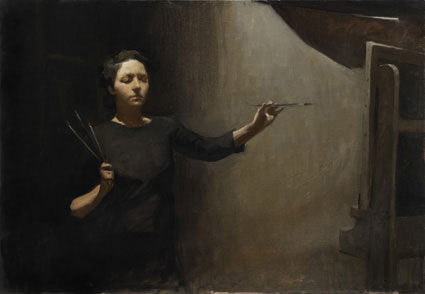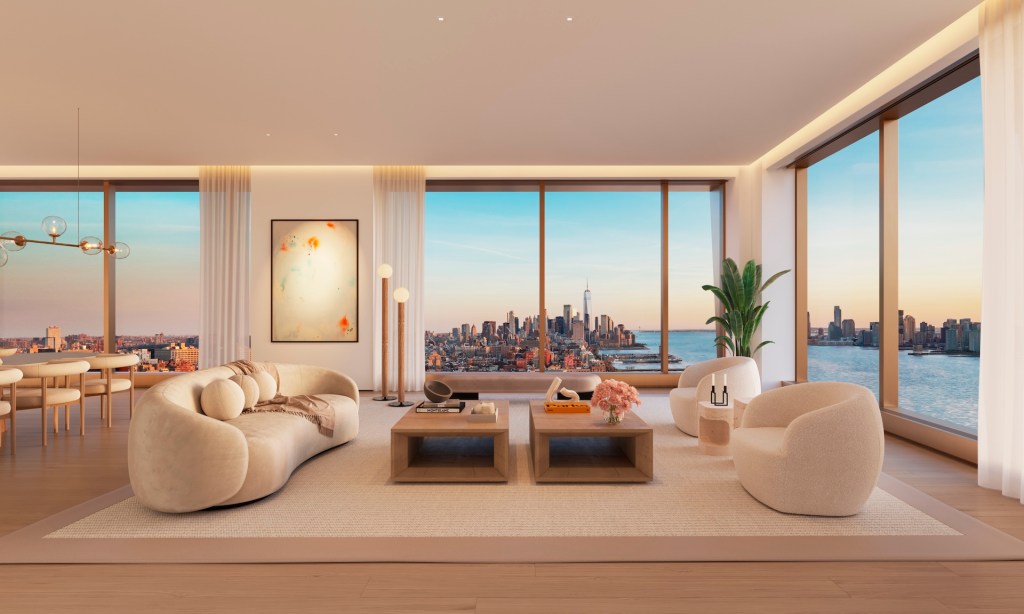Honoring The Artist: Daniela Astone

Italian-born Daniela Astone presents a somewhat different view of life on this week’s cover. While her image is a still life featuring two white chairs, they are not the kind we are used to here in the Hamptons; they are not, for example, Adirondick chairs sitting on a deck or on the beach. Yet there’s something intriguing about Astone’s image: we imagine ourselves perched there, enjoying the scenery and the cool breeze. There’s also a suggestion that the chairs are old, perhaps belonging to our grandmother.
We probably wouldn’t be far off if we had that particular perception; Astone’s paintings often evoke the past, especially since her style reflects the “Old Master” tradition. Her still lifes, with unusual objects like a typewriter or lantern, have a black background with a single dash of red color. The contrast is arresting, as are the small subtle details that Astone includes.
While the cover has a yellow-green background, the subtle details are there: a pair of shoes, a pail, an unfamiliar object on the seat. It’s as if the artist wants to describe the setting and the chairs’ owner through these items that have a history all their own.
Q: Your cover makes us wonder where it was painted and especially where you grew up.
A: I grew up in a small town on the coast of Tuscany where the setting recalled the films released after World War II called Italian Realism.
Q: Which means the area was poor, people lived in crowded conditions and had experienced terrible things in the war. Can you be more specific about the area where you lived and how it influenced you?
A: The area was Porto Santo Stefano, and it is beautiful; the nature of the Maremma landscape influenced me a lot.
Q: How about your family? Were they involved in the arts?
A: My father and aunt had a propensity for painting, but the lack of money led them to give up their dreams for a real job in art. As a child, I also showed an interest in drawing. I had a natural talent in art that I did not have for my other school subjects.
Q: Did you get some training in art, considering your ability?
A: Yes. Luckily, I changed to a high school that taught art. I was fascinated by the realistic paintings I studied. I had a feeling that behind the images there was something deeper and totally sincere.
Q: That’s exactly how I felt when I looked at your own works on the Grenning Gallery website. After high school, did you continue your art study?
A: I fondly remember the emotion I felt the first time I visited Florence. It was then that I decided I had to live there. After graduation from high school, I moved to San Frediano and attended a school of illustration, working for an American publisher who was based in Florence. I then studied at the Florence Academy of Art. I learned all the traditions of the 19th century method of painting. Through the Academy and colleagues, I met Laura Grenning who has a gallery in Sag Harbor.
Q: Let’s get back to the two white chairs that are on the cover. Where did you paint them?
A: I was in the Siena countryside to see new ideas for my paintings when I became aware of the incredible number of abandoned farmhouses in the area. I entered one of them, and there I found a series of abandoned objects filled with dust. That scene struck me so much that I went back the next day and borrowed those things.
Q: Did the chairs particularly represent a symbol for you? They did for me.
A: I felt they were like a parody of a stable couple who works hard to keep the solidity of their relationship.
Q: In a nutshell, what are the sources for your paintings?
A: I am very attached to the historic beauty of my country and the balance between man (architecture) and nature. The agricultural world fascinates me, too. I walk at least one hour per day searching for fruits, berries and plants.
Q: Your personality is a source, too.
A: I am a typical Italian. Impulsive, passionate, irrational. So if I see or read or hear something that moves me, I must paint it.
Work by Daniela Astone can be see at the Grenning Gallery, 17 Washington Street, Sag Harbor. 631- 725-8469.



